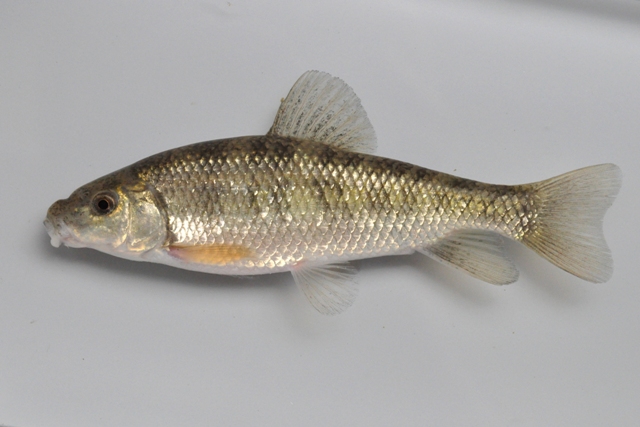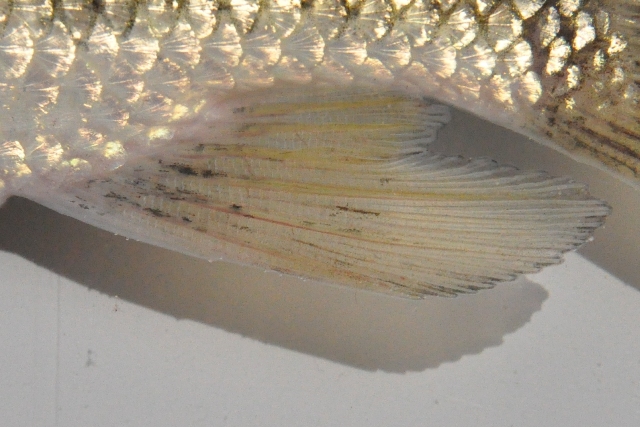Creek Chubsucker
(Erimyzon oblongus)


The creek chubsucker is the smallest species of sucker found in Ohio. Males of both the creek chubsucker and the closely related lake chubsucker can be distinguished by their hooked anal fin (right) compared to the straight edged anal fin of a female (left).
Description
Creek chubsuckers are a small species of sucker with a dark golden bronze colored back and upper sides with a light cream colored or white belly. The edges of their scales have dark margins giving them a cross hatched appearance over much of their body. They have a sub-terminal (ending below tip of snout) mouth and usually 9-10 dorsal rays. Adults have a series of 5-8 faint dark saddles over their back and on their upper sides. Below these along their sides they have a series of blotches which can be fused into a broad and usually faint stripe. Adult males have a hooked or falcate anal fin and when breeding they have three tubercles on each side of their snout. Young chubsuckers have a distinct black stripe down their side and are often mistaken as small minnows. They also have a black leading edge to their dorsal fin. The closely related lake chubsucker can be distinguished by having a closer to terminal (ending at tip of snout) mouth, usually 11 or 12 dorsal rays, and a slightly deeper body.
Habitat and Habits
Creek chubsuckers are found in slow moving prairie streams with an abundance of aquatic vegetation and clear waters. They are found over areas of sand, fine gravel, or organic debris substrates that are free of clayey silt. This species was much more numerous historically in western Ohio than it is today but it still can be found in good numbers in some of the better quality small prairie type streams in the western part of Ohio.
Reproduction and Care of the Young
Creek chubsuckers spawn in April in small streams. Much like many sucker species two males will press a single female between them as all three fish vibrate and shake their tail. This is done over a fine gravel or sand substrate and the act causes the eggs to be buried. The eggs hatch and the young emerge from the sand or gravel. No further parental care is given.